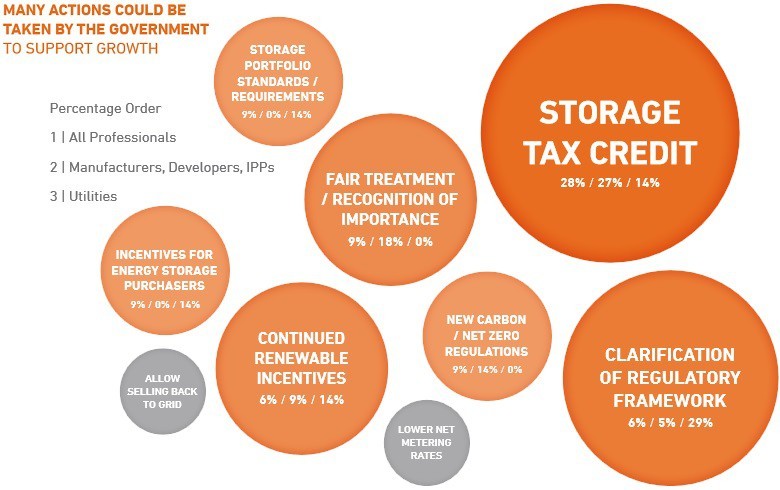This week in Energy Democracy news:
Rural Minnesota communities are finding the value of renewable energy, the city of Boulder is committing to 100% renewable energy, and a reexamination of citizen energy initiatives in spite of monopoly utility’s opposition.
Featured Stories
To lease or to own your solar array (infographic) by John Farrell, CleanTechnica
Presentation: Re-member-ing the electric cooperative by John Farrell, CleanTechnica
Here comes the sun: Some rural Minnesota businesses embrace solar to control energy costs by Ryan Johnson, Prairie Business Magazine
Listen: Distributing energy efficiently by A Public Affair, WORT 89.9FM
Boulder seeks to keep ‘moral compass’ intact while pursuing 100% renewable electricity by Alex Burness, Boulder Daily Camera
Boulder hopes it can boast 100-percent renewable electricity by 2030, according to a series of climate targets the city formally adopted last week. …
“There are paths to doing that, even without owning your own utility,” said John Farrell, a national expert on energy independence with the Institute for Local Self Reliance. “As long as you can make it lucrative for an investor-owned utility, they’ll typically be willing to talk to you about options.”
Voters win more solar energy options despite opposition from big energy by Adam Lynch, Yes! Magazine
Commonly topping any list of obstacles to a home solar energy boom are price and storage—photovoltaic panels aren’t cheap to own or install, and they maintain the obvious drawback of producing energy during daylight hours only. However, another barrier to the spread of consumer-generated solar has been the utility companies powering American homes.
Energy Democracy News in the States
Arizona
What you need to know about possible changes to the value of solar by David Wichner, Tucson Daily Star
Updated: Arizona proposal seeks to mandate renewable generation during peak demand hours by Herman K. Trabish, UtilityDive
Colorado
Boulder seeks to keep ‘moral compass’ intact while pursuing 100% renewable electricity by Alex Burness, Boulder Daily Camera
Boulder hopes it can boast 100-percent renewable electricity by 2030, according to a series of climate targets the city formally adopted last week. …
“There are paths to doing that, even without owning your own utility,” said John Farrell, a national expert on energy independence with the Institute for Local Self Reliance. “As long as you can make it lucrative for an investor-owned utility, they’ll typically be willing to talk to you about options.”
Florida
Report: Florida is battleground for utilities and fossil-fuel-backed anti-solar campaign by Mary Ellen Klas, Tampa Bay Times
With Florida now a battleground over the future of solar energy, “utility interest groups and fossil fuel industry-funded think tanks is providing funding, model legislation and political cover for anti-solar campaigns,” according to a new report funded by environmental activists and think tanks that are opposing the effort.
The report, “Blocking the Sun,” released by the Environment Florida Research & Policy Center, singles out Florida’s four largest utilities — Florida Power & Light, Duke Energy, Gulf Power and Tampa Electric — as being among 17 entities nationwide that are working aggressively “to block solar policies.”
SolarCity expands into Florida after Amendment 1 defeat by Robert Walton, UtilityDive
SolarCity launches residential solar services in Florida by Joshua Hill, CleanTechnica
Hawaii
HECO sees significant uptick in self-supply applications by Frank Andorka, PV-Magazine
Illinois
Illinois passes huge, bipartisan energy bill, proves democracy still works by David Roberts, Vox
Perhaps most importantly to clean energy fans, net metering will remain in place and there will be no demand charge. (Last-minute intervention by the governor helped kill this.) Rather than scrap net metering, the bill protects it, offers new up-front financing mechanisms, ensures “grandfathering” of any changes, and most significantly, instructs the Illinois Commerce Commission to convene a multi-stakeholder process to study what comes after net metering — how better to capture the time- and location-dependent value of distributed energy.
Iowa
Johnson County quadruples solar energy production by Mitchell Schmidt, Iowa City Gazette
Panels on the Administration Building are expected to produce about 113,000 annual kilowatt-hours, or about 24 percent of the building’s total energy use. The Health and Human Services array is anticipated to generate about 195,000 annual kilowatt-hours, or close to 12 percent of the building’s power use.
Combined, the two arrays’ energy production is similar to avoiding greenhouse gases produced by nearly 46 passenger vehicles in a year, or the annual energy use of almost 23 houses.
Maine
Despite political shifts, solar decision expected by year’s end in Maine by Tux Turkel, Portland Press Herald
LePage rails against energy deals by Mal Leary, Maine Public Radio
Maine solar power backers vow effort to preserve ‘net metering’ by Irwin Gratz, Maine Public Radio
Michigan
Michigan bills limit opportunities for renewable energy development, advocates say by Andy Balaskovitz, Midwest Energy News
At MSU, a push for 100% renewable electricity by RJ Wolcott, Lansing State Journal
The end of coal, coupled with plans to have solar panel parking bays operational by the end of 2017, show that MSU has an eye toward making campus greener, environmentally minded students say.
But they’re now pushing the university to go above and beyond its green-energy benchmarks and commit to 100% renewable electricity on campus by 2030.
House Democrats prioritize solar net metering changes in energy debate by Emily Lawler, MLive
Solar garden to open next summer by Mary Wardell, The Mining Journal
Minnesota
Here comes the sun: Some rural Minnesota businesses embrace solar to control energy costs by Ryan Johnson, Prairie Business Magazine
Microgrid powers new suburban Minneapolis office building by Frank Jossi, Midwest Energy News
Solar garden planned north of Brainerd by Travis Grimler, West Central Tribune
Nebraska
Nebraska utility launches community solar program by Joseph Bebon, Solar Industry Magazine
New Hampshire
In New Hampshire, stakeholders debate the next NEM successor tariff by Herman K. Trabish, UtilityDive
New Jersey
New Jersey Board of Public Utilities advances microgrid system development by Daily Energy Insider
New York
How do you value DERs? New York PSC staff rolls out new pricing scheme for REV by Robert Walton, UtilityDive
Microgrid shares the power in NYC by Maximilian Teodorescu, EE Times
NY offers incentives to go solar by Lindsey Riback, Lohud Journal News
New York is making $3.6 million available to advance solar and clean-energy projects throughout New York, Gov. Andrew Cuomo announced this week. The funding will increase access to solar energy in low to moderate-income communities across the state through community organizations.
The effort is also expected to help New York achieve its Clean Energy Standard initiative, in which the state aims to have 50 percent of its electricity to come from renewable resources by 2030.
NY utilities plan for the future: What matters now for distributed energy by Katherine Tweed, GreenTech Media
REV is in the Air. And the Microgrid Industry is feeling the love, mostly. by Elisa Wood, Microgrid Knowledge
Ohio
Green energy advocates warn Ohio lawmakers that renewable freeze will kill business by John Funk, Cleveland Plain Dealer
Utah
Poll finds large support for solar in Utah – but state’s main utility questions survey’s soundness by Emma Penrod, Salt Lake Tribune
The next front in the net-metering battle: Utah by Benjamin Storrow, E&E Publishing
Utah utility’s rate proposal sparks passionate public backlash by Frank Andorka, PV-Magazine
Fears over proposed changes to solar bills spark Utah application spike by Emma Penrod, Salt Lake Tribune
Rocky Mountain Power’s net metering proposal suspended by Renai Bodley, KPCW
Wisconsin
Advocates’ fears realized as Wisconsin directs energy dollars to Internet access by Kari Lydersen, Midwest Energy News
Nationwide Energy Democracy News
Renewables to drive storage growth in US, policy changes needed too by Tsvetomira Tsanova, SeeNews Renewables

The top 10 utility regulatory commission issues of 2016 by Krysti Shallenberger, UtilityDive
Let the people lighten energy load with citizen-owned schemes by Gerard Magnin, The Guardian
As local people profit from renewable energy projects, and have a say in their planning and running, opposition to developments is avoided in an equitable way.
This also builds more public support for renewable energy generally, with a positive knock-on effect for government policy. The returns on investment in these citizen-owned projects are likely to be spent in the local economies, supporting employment and businesses.
How clean energy can create jobs by Sam Perry, Consortium News
How a data tweak could rock tomorrow’s grid by David Ferris, E&E Publishing
Voters win more solar energy options despite opposition from big energy by Adam Lynch, Yes! Magazine
Commonly topping any list of obstacles to a home solar energy boom are price and storage—photovoltaic panels aren’t cheap to own or install, and they maintain the obvious drawback of producing energy during daylight hours only. However, another barrier to the spread of consumer-generated solar has been the utility companies powering American homes.
Four reasons 30% wind and solar is technically no big deal by Aaron Bloom, UtilityDive
Google will achieve 100 percent renewable energy in 2017 by Julian Spector, GreenTech Media
What Trump and Pence don’t get about clean energy jobs by Jim Marston, Environmental Defense Fund
FERC wants to open up energy markets to distributed energy by Thomas R. Burton, JD Supra Business Advisor
Small commercial solar is hard. But it’s time to give it the attention it deserves by Nicole Litvak and Jigar Shah, GreenTech Media
Missing from this solar puzzle are the small businesses, warehouses and shopping centers across the U.S. Clearly visible on Google Maps, these flat roofs serve as an enormous opportunity for businesses to save money.
As the National Renewable Energy Laboratory noted earlier this year, rooftop solar has a technical potential of 1,118 gigawatts of capacity, with over half of this potential capacity coming from “small buildings.” Despite this, installations under 250 kilowatts account for only 26 percent of all non-residential solar capacity installed. Moreover, many of these smaller installations are either public-sector projects or are part of a portfolio installed for a large corporate customer.
States urged to accommodate corporate appetite for renewables by Michael Copley, SNL
DERs and wholesale markets: Leveling the playing field – or creating a new one? by Allison Clements, Alternative Energy Magazine
Most states are combating climate change and growing their economies by Mike Maciag, Governing Magazine
A new Brookings Institution report compares state’s recent economic growth to changes in carbon emissions. In all, 33 states and the District of Columbia achieved reductions in emissions while expanding their economies between 2000 and 2014. The others saw their emissions continue to rise.
The little-watched renewables case that could bring big changes to federal-state jurisdiction by Peter Maloney, UtilityDive





